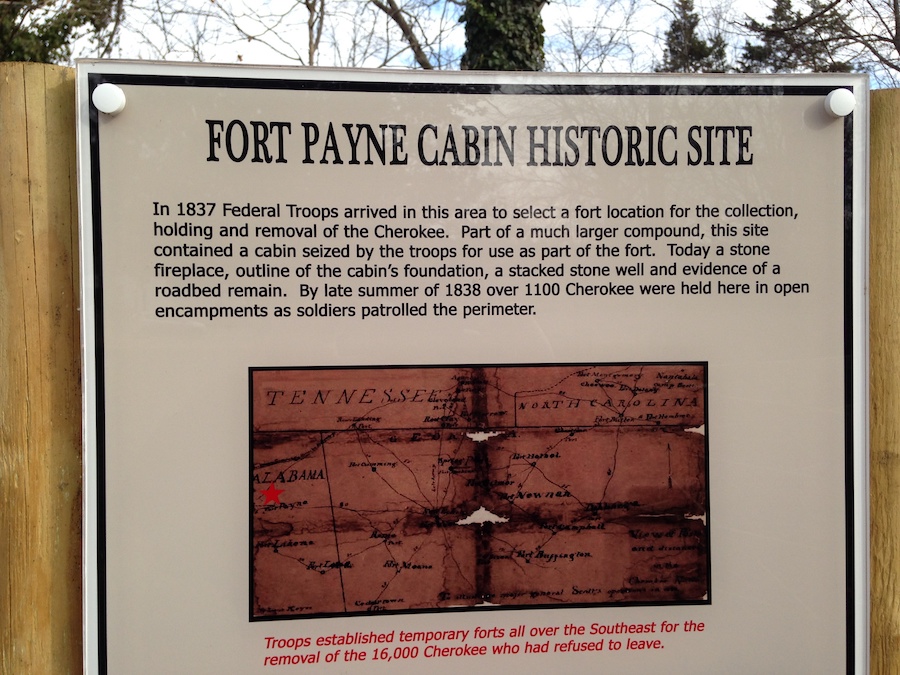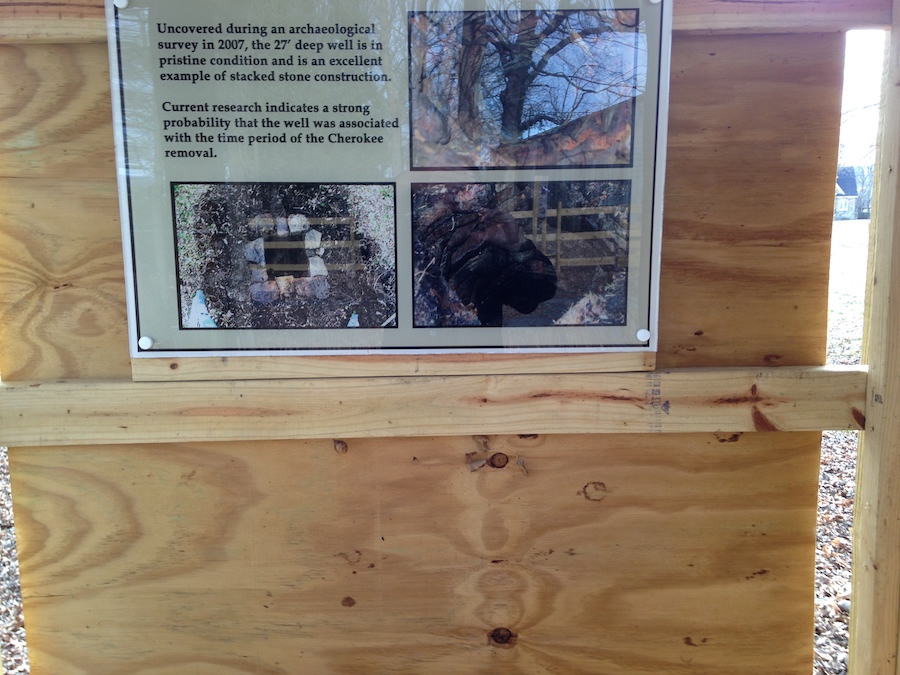

I
n 1830, newly elected President Andrew Jackson, a proponent of Indian removal, signed into law the Indian Removal Act. The act established a process whereby the president could grant land west of the Mississippi River to Indian tribes that agreed to give up their homelands. As incentives, the law allowed the Indians financial and material assistance to travel to their new locations and start new lives and guaranteed that the Indians would live on their new property under the protection of the U.S. government forever, the U.S. Department of State's Office of the Historian said. With the act in place, Jackson and his followers were free to persuade, bribe and threaten tribes into signing removal treaties and leaving the Southeast.In 1835, after witnessing the removal of other Indian tribes, a small group of Cherokee, without the authority of the Cherokee government, signed the Treaty of New Echota. In exchange for agreement to relocate to Indian Territory, the Cherokee would be paid $5 million and given two years to relocate, the NPS said. Nearly 16,000 Cherokee petitioned against the validity of the treaty, but the U.S. Congress signed it into law in May 1836.
Trail of Tears:
At the end of the two-year deadline, very few Cherokee had left voluntarily, so Gen. Winfield Scott and 7,000 troops were dispatched to forcefully remove the Cherokee in spring 1838. The removals began in Georgia, where the Cherokee were forced into "round-up camps," before being sent to larger removal camps prior to the 800-mile journey, the NPS said.

The first group, able to travel by water, reached the Indian Territory in 13 days. However, for some of the subsequent groups that had land routes, the journey lasted up to eight months. Of the approximately 15,000 Cherokee who were forced from their homes, the Cherokee Nation estimates that about 4,000 Cherokee died along the trail from hunger, exposure and disease.
https://www.alabamanewscenter.com/2016/12/16/trail-of-tears-memorializes-removal-of-cherokee-from-alabama-southeast/
Trail of Tears had Multiple Routes:
There were several overland routes and one main water route. It stretched 5,000 miles across portions of nine states (Alabama, Arkansas, Georgia, Illinois, Kentucky, Missouri, North Carolina, Oklahoma, and Tennessee).Fort Payne is the beginning of the Benge Detachment Route.
Benge Detachment Route:

The Route:
Research tells us that the Benge Detachment departed the fort on Ross' Landing Road and headed south to the Gunter's Landing Road Intersection, following that route west. Maps and surveys show the Ross' Landing Road crossing the SE corner of this property.On the first day of their nearly 800 mile journey, John Benge reported to Chief John Ross, "We find on examination of the condition of the detachment.. collected at this place (Fort Payne).. that many of them, at least two-thirds, are in destitute condition and in want of shoes, clothing and blankets.. the detachment consists of 1190 persons, we have only 83 tents."
The only known surviving wagon from the historic Cherokee Trail of Tears measures nine feet six inches long. The Benge Detachment had 57 wagons for over 1100 people.
Fort Payne Cabin:

Fort Payne Cabin Historic Site:
In 1837 Federal Troops arrived in this area to select a fort location for the collection, holding and removal of the Cherokee. Part of a much larger compound, this site contained a cabin seized by the troops for use as part of the fort. Today a stone fireplace, outline of the cabin's foundation, a stacked stone well and evidence of a roadbed remain. By late summer of 1838 over 1100 Cherokee were held here in open encampments as soldiers patrolled the perimeter.Troops established temporary forts all over the Southeast for the removal of the 16,000 Cherokee who had refused to leave.

The majority of the Cherokee forced to leave their homes in Alabama were held at Fort Payne and departed in groups with the Benge Detachment from September 29 through October 3, 1838. They had no military escort or armed guards but were led by Cherokees John Benge, conductor and George Lowery, assistant conductor. They set off from this site headed west to Indian Territory - an 800 mile journey that became know as the Trail of Tears.
The military closed Fort Payne soon after October 3, 1838 and departed the area.
Spirit the Preacher

Spirit the Preacher (John Huss) Cabin:
Existing Cherokee homes and buildings were confiscated by the military for use in removal forts. Research indicates a 19'x 18' two story dwelling with a loft and stone fireplace, belonging to a Cherokee, Spirit the Preacher (John Huss) was part of the local property taken by troops for their use at Fort Payne.John Huss Valuation:
One Dwelling House 19 by 18 feet, 2 story, hughed logs, chinked and dobed lined inside with bords, puncheon floor, bord loft, shingled roof, one 12 light window, two doors cased and faced, good bottom shutters, wodden chimbly rock back harth and jambs. $100.00
Chimney Still Standing:


View up the Chimney:

Cabin Foundation:

27 Foot Well:


27 Foot Well:
Uncovered during an archaeological survey in 2007, the 27' deep well is in pristine condition and is an excellent example of stacked stone construction.Current research indicates a strong probability that the well was associated with the time period of the Cherokee removal.
Willstown Mission Cemetery:

Willstown Mission Cemetery:
In 1823, a mission/school for Cherokee was opened in Wills Town (now Fort Payne). The school was closed prior to the removal in 1838. The only marked graves belong to the school's teacher and white settlers, but some of the unidentified graves could be those of the 41 Cherokee, who according to military records, died in camp at Fort Payne prior to their detachment's departure.
Follow Their Footsteps:

Follow Their Footsteps:
The only Trail of Tears Route originating in Alabama, the Benge Detachment left Fort Payne beginning an 800 Mlle Journey, feeling the loss of homeland and unsure of what lay ahead.Today the first 38 miles of their route, from the Fort Payne Cabin Site to the Tennessee River, has been identified and marked and driving directions are available.
Over 1100 men, women and children traveled this route during the fall of 1838.
Think of them as you follow their path.
The Trail of Tears: Was part of a series of forced displacements of approximately 60,000 Native Americans of the Five Civilized Tribes between 1830 and 1850 by the United States government known as the Indian removal. Tribal members moved gradually, with complete migration occurring over a period of nearly a decade. Members of the Cherokee, Muscogee (Creek), Seminole, Chickasaw, and Choctaw nations (including thousands of their black slaves) were forcibly removed from their ancestral homelands in the Southeastern United States to areas to the west of the Mississippi River that had been designated 'Indian Territory'. The forced relocations were carried out by government authorities after the passage of the Indian Removal Act in 1830. The Cherokee removal in 1838 (the last forced removal east of the Mississippi) was brought on by the discovery of gold near Dahlonega, Georgia in 1828, resulting in the Georgia Gold Rush.
Trail of TearsThe relocated peoples suffered from exposure, disease, and starvation while en route to their newly designated reserve. Thousands died before reaching their destinations or shortly after from disease.








